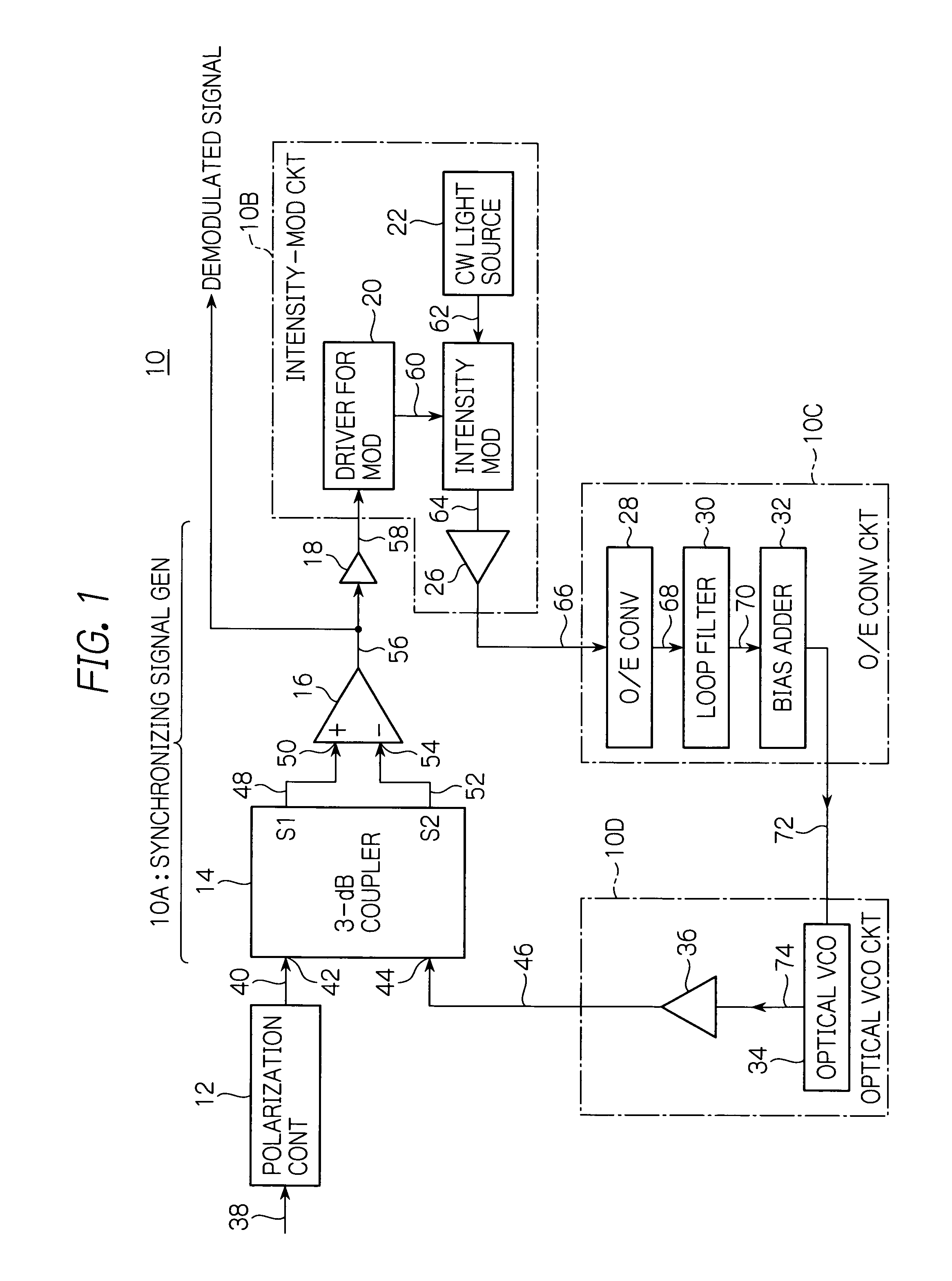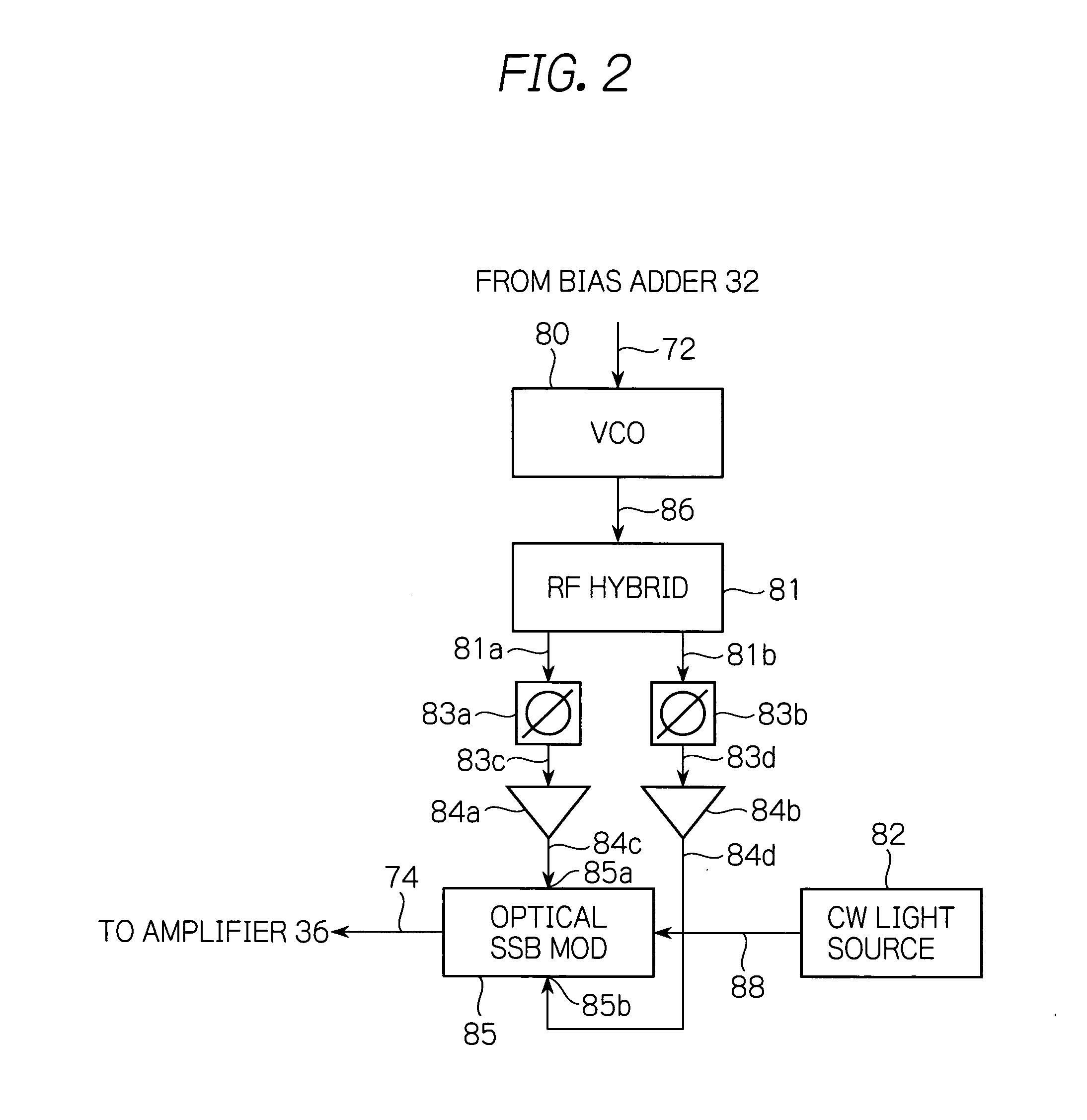Synchronous circuit for use in optical homodyne receiver for generating local oscillation light with accurate demodulation
a technology of synchronous circuit and local oscillation light, which is applied in the direction of light demodulation, transmission monitoring/testing/fault measurement system, instruments, etc., can solve the problems of many research problems that remain unsolved, the multiplication is difficult to implement through current electronic devices, and the generation of harmonics involves many research problems. , to achieve the effect of improving demodulation accuracy and high accuracy
- Summary
- Abstract
- Description
- Claims
- Application Information
AI Technical Summary
Benefits of technology
Problems solved by technology
Method used
Image
Examples
Embodiment Construction
[0030]Well, reference will be made to accompanying drawings to describe in detail a synchronous circuit of an optical homodyne receiver in accordance with preferred embodiments of the present invention. With reference first to FIG. 1, a synchronous circuit 10 for use in an optical homodyne receiver in accordance with a preferred embodiment generally includes: a synchronizing signal generator 10A adapted to combine a received optical BPSK signal 40 with a received local oscillation light 44, either of which the generator 10A may shift in phase, to thereby produce a plurality of different optical signals, among which optical signals 48 and 52 for use in producing a signal demodulated from the optical BPSK signal are square-law detected, optical signals resultant from the square-law detection being operated and converted to an electric signal 56, from which a phase-locking electric signal 58 is produced which may be used as a signal demodulated from the optical BPSK signal; an intensit...
PUM
 Login to View More
Login to View More Abstract
Description
Claims
Application Information
 Login to View More
Login to View More - R&D
- Intellectual Property
- Life Sciences
- Materials
- Tech Scout
- Unparalleled Data Quality
- Higher Quality Content
- 60% Fewer Hallucinations
Browse by: Latest US Patents, China's latest patents, Technical Efficacy Thesaurus, Application Domain, Technology Topic, Popular Technical Reports.
© 2025 PatSnap. All rights reserved.Legal|Privacy policy|Modern Slavery Act Transparency Statement|Sitemap|About US| Contact US: help@patsnap.com



